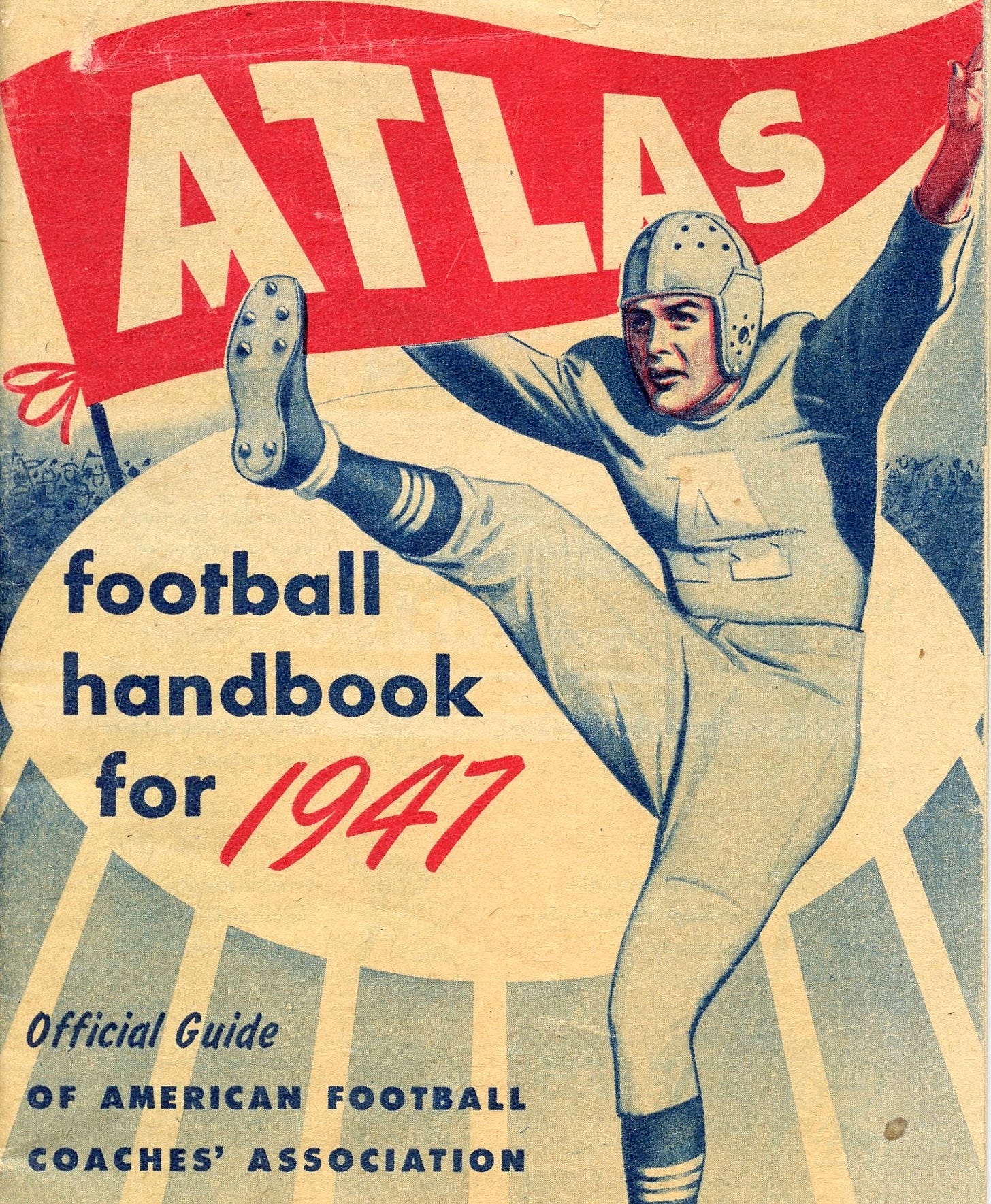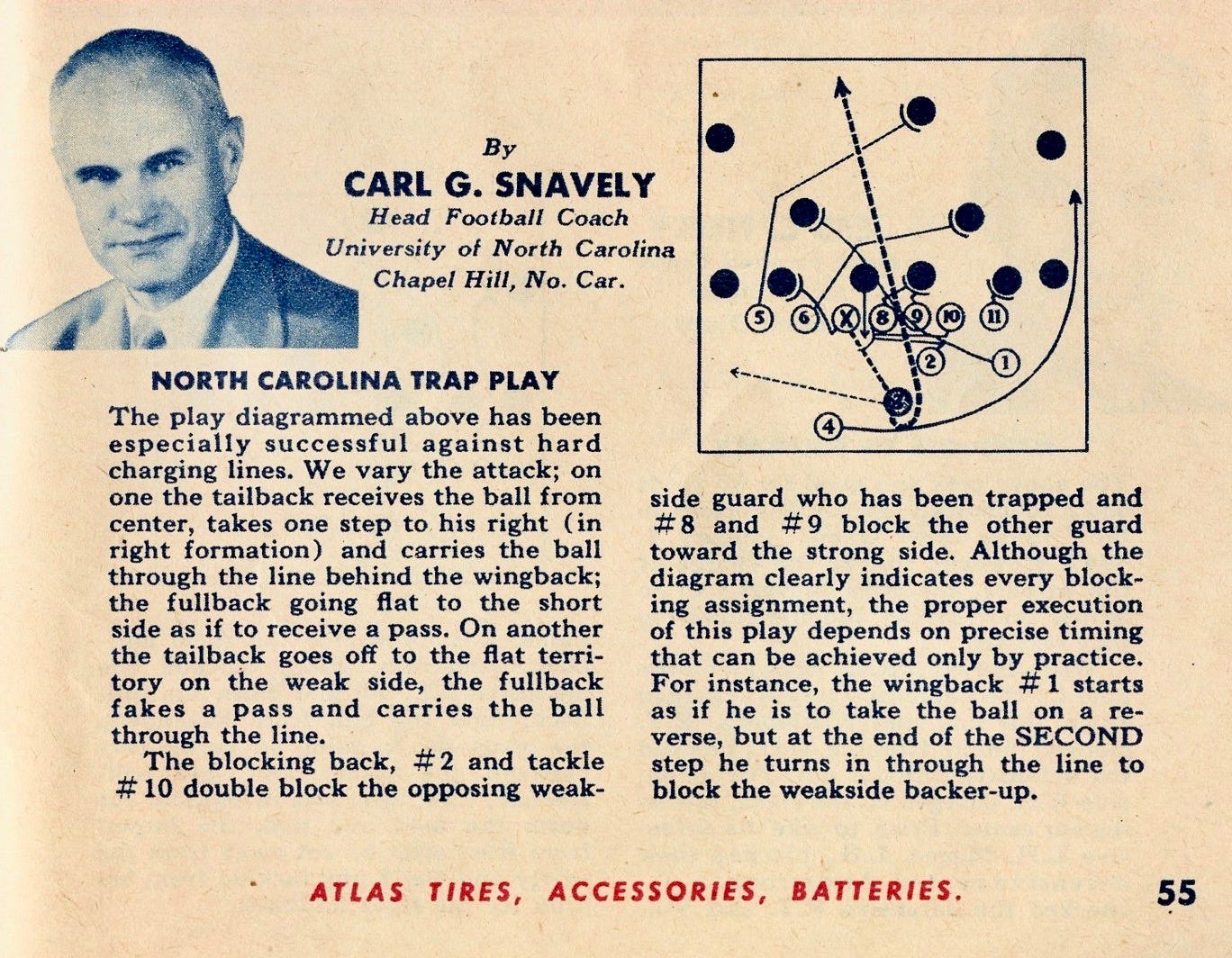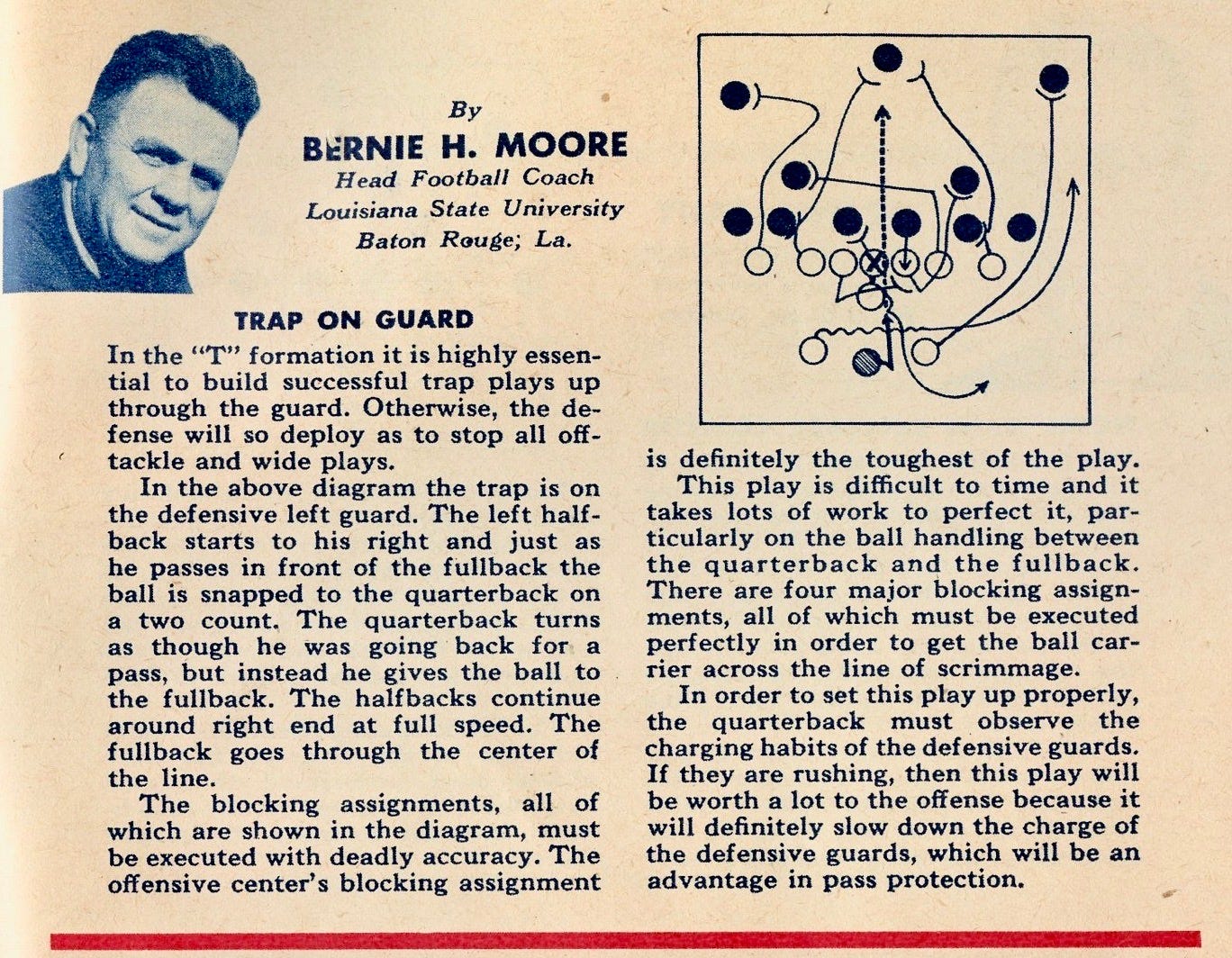Today's Tidbit... It's A Trap
Standard Oil service stations began distributing the Atlas tire brand in 1935, and a great way to promote the tire brand and 38,000 service stations was through giveaway football handbooks. The official guide of the American Football Coaches Association, Atlas’ 1947 handbook, was a real humdinger.
The handbook included the 1947 schedules and 1946 results for 200+ teams, the projected top teams by conference, past bowl game results, and more. Part of the more were play diagrams and explanations submitted by coaches nationwide.
Today, we’ll review two versions of the venerable trap play, which entered football in the 1890s and was popularized by Percy Haughton while coaching Harvard from 1908 to 1916. Originally called the mousetrap play, it uses deception to encourage an unblocked defender to charge upfield, taking the bait before being blindsided by a pulling blocker.
Check out the diagram and Carl Snavely’s explanation of his trap play from the Single Wing.
UNC traps with two double blocks (aka double team blocks). #8 and #9 double team one defensive guard, while the blocking back (#2) and the strong tackle (#10) double team the man being trapped. The wingback (#1) also heads through the hole, so there is a lot of traffic in a confined space.
Bernie Moore was in his eighteenth and last season as LSU's head coach in 1947. He left that role to become the SEC Commissioner, a position he also held for eighteen years. While Snavely ran the Single Wing, Moore used the Modern T. His version of the trap is much cleaner than Snavely's.
Here, the left halfback goes in motion -a core element of 1940s T formation offenses- and the ball gets snapped to the quarterback, who turns and drops back to pass, handing the ball to the fullback as he passes by. The halfbacks carry out sweep or swing pass fakes as the left offensive guard traps the defensive guard on the other side of the center. Combining the draw element with the trap makes this an interesting play.
Both plays come against six-man defensive lines, which we don't see much anymore, but LSU's version still looks pretty fresh for a seventy-five-year-old play.
Football Archaeology is reader-supported. Click here to buy one of my books or otherwise support the site.




